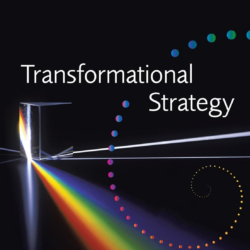The Magic Behind the Consensus Workshop Method
What is the magic that makes the Consensus Workshop Method an extraordinary tool to help a group develop new ideas and consensus?
This article is excerpted from Getting to the Bottom of ToP by Wayne and Jo Nelson, Chapter 6.
The phenomenology behind the consensus workshop method
Let us step aside for a moment to discuss an approach that has become integral to ToP methodology as a way of processing objective, reflective and interpretive information. We have used the term gestalt to identify the process of relating ideas that respond to a focus question in similar ways. Max Wertheimer, one of the founders of the Gestalt approach, says gestalt is:
A physical, biological, psychological for more, or symbolic configuration or pattern of elements so unified as a whole that its properties cannot be derived from a simple summation of its parts.
. . . the essence or shape of an entity’s complete form[1]
The gift of Gestalt
The focal point of Gestalt theory is the idea of relating specific elements to see a pattern of thought. The “whole” we see is something more structured and cohesive than a group of separate particles. Wertheimer says:
There are wholes, the behaviour of which is not determined by that of their individual elements, but where the part-processes are themselves determined by the intrinsic nature of the whole.
When a group of people work together it rarely occurs, and then only under very special conditions, that they constitute a mere-sum of independent Egos. Instead the common enterprise often becomes their mutual concern and each works as a meaningfully functioning part of the whole. [2]
Michael Polanyi addresses this in his book, The Tacit Dimension[3]. Polanyi identifies two terms of tacit knowing: proximal and distal. The proximal or the term nearest to us refers to the particulars of a situation. The distal term, furthest from us, is the whole. The relationship between the proximal and distal terms of tacit knowing has three aspects: functional, phenomenal, and semantic.
In the functional aspect of tacit knowing we move from the specifics to the whole. In the phenomenal aspect we are aware of the specifics as we look at the larger question. The distal term is the larger topic and the big picture questions that elicit specific responses. The semantic aspect comes into play when certain relationship specifics are perceived and an overall image is formed. This is the intuitive nature of gestalt. We see the larger picture as we see patterns in the specifics. The phrase “The whole is greater than the sum of the parts” is often used when explaining gestalt. Indeed, this phrase is often stated as one of the foundational assumptions underlying ToP methodology as it is used with groups.
Gestalt in this context is about seeing “‘patterns of meaning” in a whole set of ideas given in relation to a specific question. The individual responses to the focus question will, if the focus question is well-designed, be comprehensive in addressing the question. The task is to discern the major themes of thought or distinct answers to the given question. There may be many connections and associations among the ideas. There may be causes and effects. There may be words that are similar or seem to have similar meanings. The key factor in distilling useful meaning from this process is the question used as the guide, the focus question. It focuses the generation of ideas and guides discernment of the thought patterns of the responses. The question becomes the fundamental reference point for a whole inquiry and all of its parts. The patterns are named as the group’s response to the focus question.
It must be understood that this is a process of synthesis rather than analysis. One of the easy temptations in performing this process is the tendency to sort elements into categories that are already integrated into our understanding even if they are not consciously identified. It is, without question, much easier for both the participant and the facilitator to sort into known categories, but sorting only organizes previous ideas, and does not create new ideas. Analytical methodologies play a necessary role in processing ideas when an overall framework is already firmly in place.
Consistent with the nature of phenomenological inquiry, a true gestalt does not make any assumptions about the relationships among data. Those assumptions are intentionally bracketed by the method until later in the process. There are no categories until they are identified and named. Gestalt¾and all phenomenological inquiry¾are oriented toward forming new understanding. If the process merely categorizes elements using typologies of information, a true “gestalt” has not happened. A gestalt creates a new picture and a new understanding of a given reality.
A four-step process
Performing a gestalt is a four-step process. The first step is the question posed to a group. That question becomes the focus and reference point for the whole process. The group responds and the ideas are recorded graphically. In the ToP lexicon, this is the objective level of processing ideas.
It is then that the gestalt process begins more formally. The second step is identifying the themes or patterns within the responses in relationship to the question itself. It is necessarily an iterative process which enables a group to formulate meaningful clusters of similar responses to the focus question. Clustering starts with intuitive, reflective associations between responses and gradually builds interpretation of what is emerging.
The third step is to articulate the nature of each identified thought pattern and the relationships among them. This step reveals the group’s major answers to the question. When all of the themes are named, the group has created a new image of their response to the question.
For many, this is an almost magical event. The gestalt moves the information from individuals’ ideas to the ideas of the group. In a very real way, people give their ideas to the group and they become, to use an economic metaphor, the property of the whole. It is a gifting or a kind of surrender. From a long list of ideas that respond to the question in different ways, the group creates a meaningful understanding of its response to the question. They have discovered their commonality of thought and within it, the major elements.
To wrap up the process, the fourth step, a reflection on the resulting gestalt brings the group to the point of resolution.
[1] Wertheimer, 1924
[2] Ibid
[3] Polanyi, 2009 p. 18





